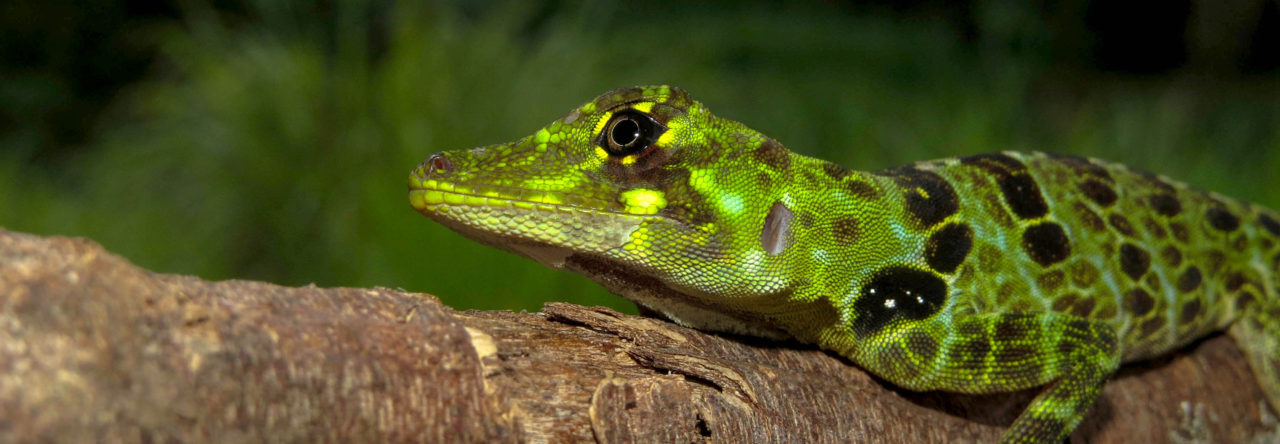
Photo by James Christensen
Anolis auratus is one of the most widespread mainland anoles, with a range stretching from Costa Rica through much of northern top of South America on both sides of the Andes. It’s biology is surprisingly little known, though it is thought to be a grassland species; that and it’s morphological similarity to grass-inhabiting Caribbean anoles has led some to argue that this species is a member of the grass-bush ecomorph category.
Given it’s wide range in Colombia traversing the Andes, the species is ripe for investigation of geographic variation, and that is just what Martha Calderón-Espinosa and Leidy Alejandra Barragán-Contreras did, examining a large number of museum specimens in the collection of the Instituto de Ciencias Naturales, Universidad Nacional de Colombia. Their work was recently published in Acta Biológica Colombiana. The abstract is appended below, but to make a not-so-long story short, sexual dimorphism exists for several characteristics independent of body size (the sexes don’t vary in size), and these same characters vary geographically. What this means about variation in habitat use of the species across its range remains to be studied.
Abstract
Anolis auratus is a widely distributed species, from Costa Rica in Central America, through northern South America, including Colombia, Venezuela, northern Brazil, Surinam and the Guyanas. In Colombia, its widespread distribution across different life zones suggests that these lizards occupy different environments and exhibit different microhabitat use in different geographic areas. On the other hand, some observations suggest that this species prefers open areas, selecting grasslands over brushy areas, and thus, an alternative hypothesis is that microhabitat use is similar among different populations. In Anolis, body variables related to locomotion (body size and shape) define structural microhabitat use, so two distinct patterns could be expected in this species: conservative or highly variable body size and shape throughout the species distribution. To test these predictions, we characterized geographic variation in morphometric traits of this species in Colombia. Females and males were similar in body size, but exhibited differences in some variables related to body shape. These characteristics also varied among males and females from different regions, suggesting heterogeneous use of structural microhabitat, between sexes and among populations. As an alternative, phylogenetic divergence among populations could also account for the observed differences. Absence of ecological and phylogenetic data limits our ability to identify the underlying causes of this pattern. However, we provide a general framework to explore hypotheses about evolution of body size and shape in this species.
- Evolution in Real Time on Lizard Island - March 23, 2025
- Spider Snags Adult Anolis osa - March 22, 2025
- An Homage to the Green Anoles of New Orleans - March 21, 2025


Ambika Kamath
The convergence in pattern with Caribbean grassbush anoles is so striking!